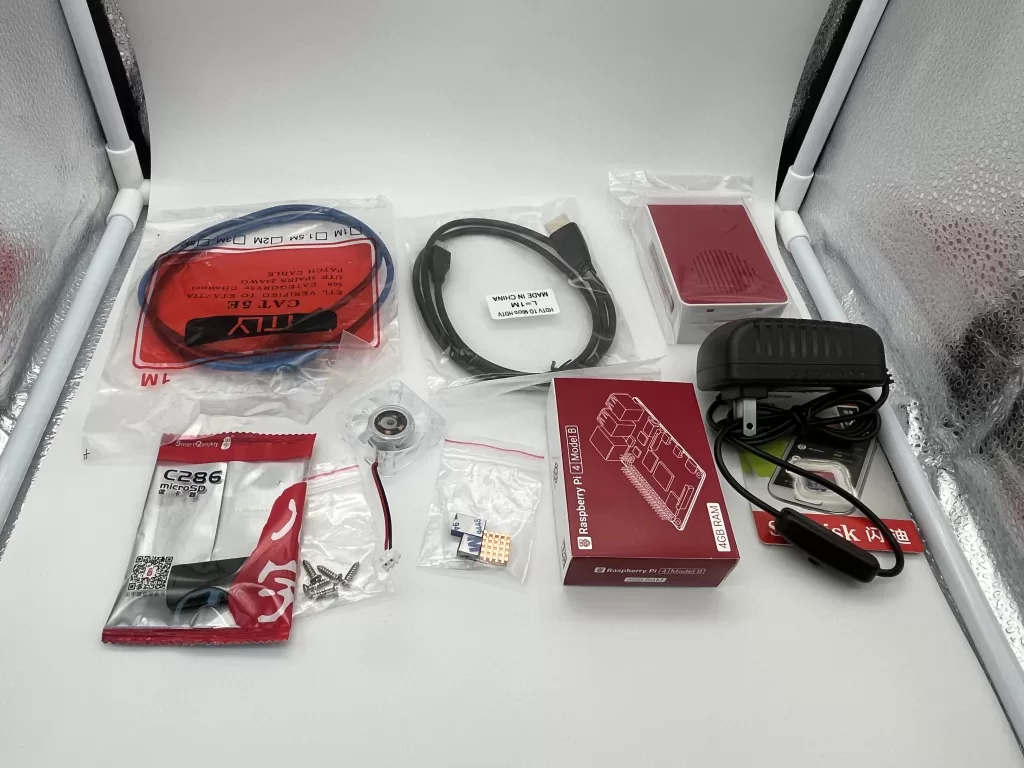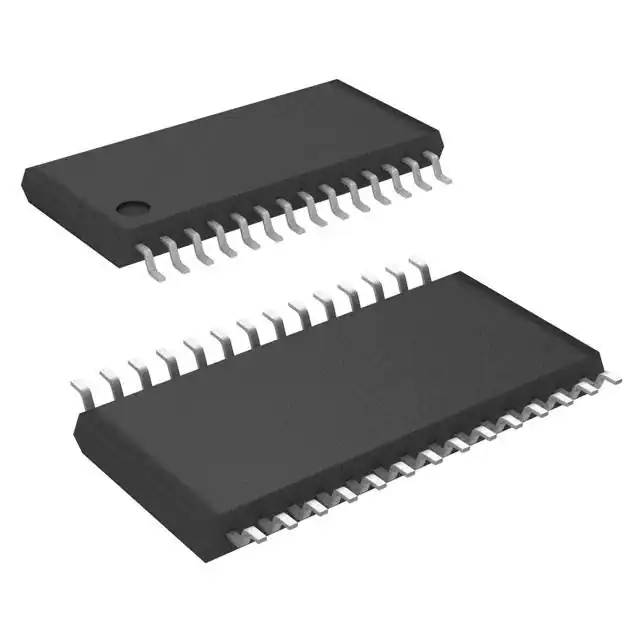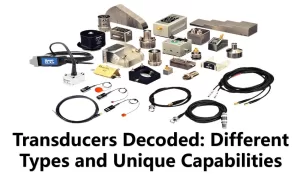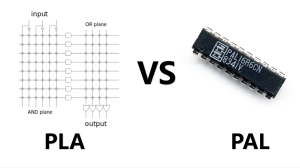In this blog, we'll delve into the world of transducers, unveiling their secrets and showcasing their unique capabilities.
View detailsDiode Basis: Symbol, Types and Applications
Diodes are essential components in electronics, serving important functions such as rectification, modulation, regulation, and protection. They come in various types and are represented by different symbols. This blog covers the basics of diodes and their common applications.
What is A Diode?
A diode is a two-terminal electronic component made of semiconductor material, such as silicon or germanium, that allows the flow of electric current in one direction while blocking it in the opposite direction. When voltage is applied in the forward bias direction, the diode acts as a closed switch with minimal resistance, while in the reverse bias direction, it acts as an open switch with high resistance. Diodes are used in rectification circuits, voltage regulation, signal modulation, and protection circuits, as well as in semiconductor devices like transistors and integrated circuits.
Diode Symbol and Structure
The symbol of a diode consists of a triangle pointing towards a vertical line. The vertical line represents the cathode, and the triangle represents the anode. The direction of the arrow indicates the direction of current flow when the diode is forward-biased.

Figure 1 Symbol of Diode
Diodes are typically constructed using semiconductor materials, such as silicon or germanium. They consist of a P-N junction, where P represents the positive (anode) region and N represents the negative (cathode) region. This junction allows current to flow in one direction while blocking it in the opposite direction.
Types of Diode
Diodes are electronic components that allow the flow of electric current in one direction while blocking it in the opposite direction. There are several types of diodes, each designed for specific applications. Let's explore some commonly used diode types:
Rectifier Diodes: Rectifier diodes are essential for converting alternating current (AC) to direct current (DC). They have a high forward current carrying capacity and are available in two main types:

Figure 2 Rectifier Diode
- Standard Rectifier Diodes: These diodes have a low forward voltage drop and are commonly used in power supply circuits and rectification applications.
- Fast Recovery Rectifier Diodes: These diodes have a faster recovery time, making them suitable for high-frequency applications.
Zener Diodes: Zener diodes are specifically designed to operate in the reverse breakdown region. They have a specific breakdown voltage, known as the Zener voltage, at which they maintain a stable voltage across the terminals. Zener diodes are commonly used for voltage regulation, voltage reference, and protection against voltage spikes.

Figure 3 Zener Diode
Light-Emitting Diodes (LEDs): LEDs are diodes that emit light when current flows through them. They are widely used in various applications, such as display panels, indicators, lighting solutions, and even in optical communication systems. LEDs are available in different colors and have become a popular choice for energy-efficient lighting.

Figure 4 LED Diode
Schottky Diodes: Schottky diodes have a low forward voltage drop and fast switching characteristics. They are constructed with a metal-semiconductor junction, resulting in a lower voltage drop compared to standard diodes. Schottky diodes find applications in high-frequency circuits, rectifier circuits, and as clamping diodes.

Figure 5 Schottky Diode
Varactor Diodes: Varactor diodes, also known as variable capacitance diodes or tuning diodes, are used as voltage-controlled capacitors. They exhibit a variable capacitance based on the applied voltage. Varactor diodes find applications in tuning circuits, oscillators, frequency synthesizers, and voltage-controlled filters.

Figure 6 Varactor Diode
PIN Diodes: PIN diodes are constructed with three layers: P-type, Intrinsic (undoped), and N-type. They have a wider depletion region, making them suitable for applications that require fast switching and low distortion. PIN diodes are commonly used in RF switches, attenuators, microwave switches, and high-frequency applications.

Figure 7 PIN Diode
Avalanche Diodes: Avalanche diodes are designed to operate in the reverse breakdown region. They experience an avalanche breakdown when the reverse voltage exceeds a certain threshold, allowing a large current to flow. Avalanche diodes are used for voltage clamping, transient suppression, and protection against voltage spikes.
How Does A Diode Work?
A diode is an essential electronic component that serves the purpose of allowing the flow of electric current in one direction while blocking it in the opposite direction. It functions as a unidirectional conductor, akin to a check valve in a plumbing system.
When a diode is forward-biased, meaning the positive terminal of a voltage source is connected to the anode (positive terminal) of the diode, and the negative terminal is connected to the cathode (negative terminal), it permits current to flow freely through it. This behavior arises from the diode's unique construction, which facilitates the movement of electrons from the anode to the cathode.
Conversely, when a diode is reverse-biased, with the positive terminal of the voltage source connected to the cathode and the negative terminal connected to the anode, it acts as a barrier to current flow. In this state, the diode effectively acts as an insulator, preventing the movement of electrons from the cathode to the anode.
The primary function of a diode is to regulate the direction of current flow within a circuit. It finds wide-ranging applications, including rectification, voltage regulation, signal modulation, reverse polarity protection, and signal demodulation. Diodes are extensively used in electronic devices, power supplies, communication systems, and various other fields.
In summary, the diode's capacity to permit current flow in one direction while hindering it in the opposite direction makes it an indispensable component in modern electronics. Its utilization enables the development of diverse electronic circuits and systems, thus contributing significantly to technological advancements.
Applications of Diode
Diodes are widely used in electronics and electrical engineering due to their ability to control current flow. They are essential in many electronic circuits and systems. Common applications of diodes include:
Rectification: Diodes are extensively used for rectification, where they convert alternating current (AC) into direct current (DC). They achieve this by allowing current to flow in only one direction, effectively removing the negative portion of the AC waveform. Rectifier diodes are commonly used in power supplies and electronic devices to provide a stable DC voltage.
Voltage Regulation: Zener diodes, a specific type of diode, are commonly used for voltage regulation. They are designed to maintain a constant voltage across their terminals, even when the input voltage changes. Zener diodes are used to stabilize power supplies, protect sensitive electronic components from voltage spikes, and create reference voltage sources.
Signal Modulation: Diodes are employed in signal modulation circuits, which are used for transmitting information over long distances. In amplitude modulation (AM) circuits, diodes are used to detect and extract the modulating signal from the carrier wave. In frequency modulation (FM) circuits, varactor diodes are used to control the frequency of the carrier wave.
Protection Circuits: Diodes are crucial components in protection circuits, where they safeguard sensitive electronic devices from voltage spikes and reverse polarity. Transient voltage suppression diodes, also known as TVS diodes, are used to protect circuits from voltage transients caused by lightning strikes, electrostatic discharge, or other high-voltage events. Additionally, diodes can be used in reverse polarity protection circuits, preventing damage to electronic systems by blocking the reverse flow of current.
Logic Gates: Diodes are used in the construction of logic gates, which form the building blocks of digital circuits. By combining diodes with other electronic components, logic gates can perform logical operations such as AND, OR, and NOT. These gates are essential for designing digital systems, including computers, microcontrollers, and integrated circuits.
Light-Emitting Diodes (LEDs): Light-emitting diodes, or LEDs, are a specific type of diode that emits light when current flows through them. LEDs are widely used for various applications, including lighting, displays, indicators, and signage. They offer energy efficiency, long lifespan, and the ability to produce different colors.
Diode Lasers: Diode lasers utilize the properties of diodes to emit coherent light. They are used in numerous applications, such as laser pointers, barcode scanners, fiber optic communication, medical equipment, and laser printing.
Demodulation: Diodes play a vital role in demodulating signals. In radio receivers, diodes are used for envelope detection, extracting the original modulating signal from an amplitude-modulated carrier wave.
Conclusion
Diodes are essential components in electronics, with various types and applications. They are used for rectification, voltage regulation, signal modulation, protection circuits, logic gates, powering LEDs, and diode lasers. Understanding diodes is crucial for anyone interested in electronics. Diodes play a significant role in modern electronics by controlling current flow and performing specific functions.
Becky
Becky is a technical writer who are interested in writing some professional and original articles. She spent some time working in some electronic sector, but her main area of interest is the use of AI in edge computing. The rest of the time, she write or program about technology-related articles pertaining to the Internet of Things, GPU computing, LoraWAN, PCB, Machine Learning, Precision Agriculture, Open Electronics, and similar areas.
WEW ALL POSTS BYBecky-
Transducers Decoded: Different Types and Unique Capabilities 320
-
Decoding the LAN Connector: What You Should Know 302
The commonplace LAN connector is essential to the networking and connectivity space because it allows devices to communicate with each other. The u...
View details -
Comparison Between PLA and PAL: Which One is Right for You? 533
Programmable logic devices (PLDs) are integrated circuits that can be configured to carry out a number of different digital logic operations. They ...
View details -
Demystifying the Ultimate Guide to Memory Card Readers 43
In this blog, we will delve into the world of Memory card readers, equipping you with the knowledge to choose the right one for your needs.
View details -
Can Verilog and VHDL be improved for FPGAs? 254
This article is going to simply introduce Verilog, the history of Verilog, VHDL, the history of VHDL, as well as talk about the Conventional FPGA D...
View details -
AC Capacitor vs DC Capacitor: What’s the Difference? 21
In this blog, we will delve into the world of AC vs DC capacitors, explaining their characteristics, functions, and how to identify them.
View details
 Ampheo Electronics
Ampheo Electronics






